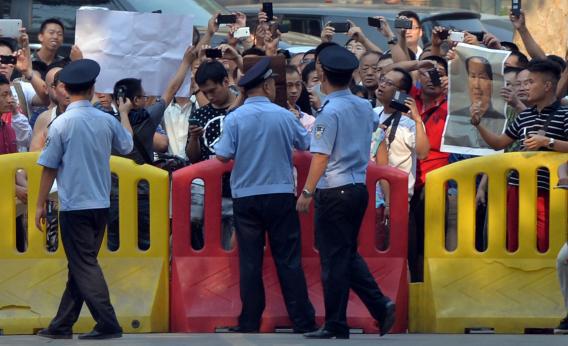When you start to see more frequent protests in an authoritarian country, it means the regime is in trouble, right?
Not necessarily. Consider China, where the number of protests and “mass incidents” nationwide increased from about 10,000 in 1994 to roughly 180,000 in 2010 without much of a serious threat to the regime’s control.
In a recent paper for the Quarterly Journal of Political Science, Berkeley political scientist Peter Lorentzen argues that protests, as long as they are the right kind of protests, can actually be useful for authoritarian regimes.
Dictatorships, after all, generally lack institutions like true opposition parties, independent media outlets, and civil groups. In addition to representing the interests of citizens in democracies, these institutions also provide government’s with information. Even the harshest dictatorships need to keep tabs on public opinion if they’re to remain in power, and that’s where protests can come in.
“Permitting protests of limited scale and scope can enable a regime to identify and deal with discontented communities before they turn to more extreme counter-regime activities or revolt,” Lorentzen writes. “Protests, being costly, provide a clear division between groups whose grievances are tolerable and those with grievances severe enough to drive counter-regime challenges.”
Naturally, only certain kinds of actions work this way—what the paper terms “loyalist” vs. revolutionary protest. Loyalist protesters tend to focus on local, often economic concerns, rather than questioning the political status quo as a whole. A certain number of protests of this kind are actually a sign of health for authoritarian regimes, indicating that discontent is “neither so rare as to be irrelevant nor so widespread as to be unmanageable.”
The Chinese government in the years since 1989 may be the most notable example of this kind of system, but Lorentzen points to some other examples, including Hosni Mubarak’s Egypt, were labor protests “long took a loyalist form, with workers focusing on narrow economic issues while eschewing broader demands or attempts to coordinate across plants.” Obviously, this didn’t last forever, but 30 years is a pretty good run for an autocrat.
I wonder also if there’s a geographic component here. Local protests, even violent ones, in towns far from media and political centers are relatively manageable. It’s when the crowds start gathering in Tiananmen or Tahrir that it gets real for a regime.
But with a number of countries in the news currently hovering somewhere between democracy and dictatorship, it’s a good reminder that just because people are in the streets, doesn’t mean the government is going down.
